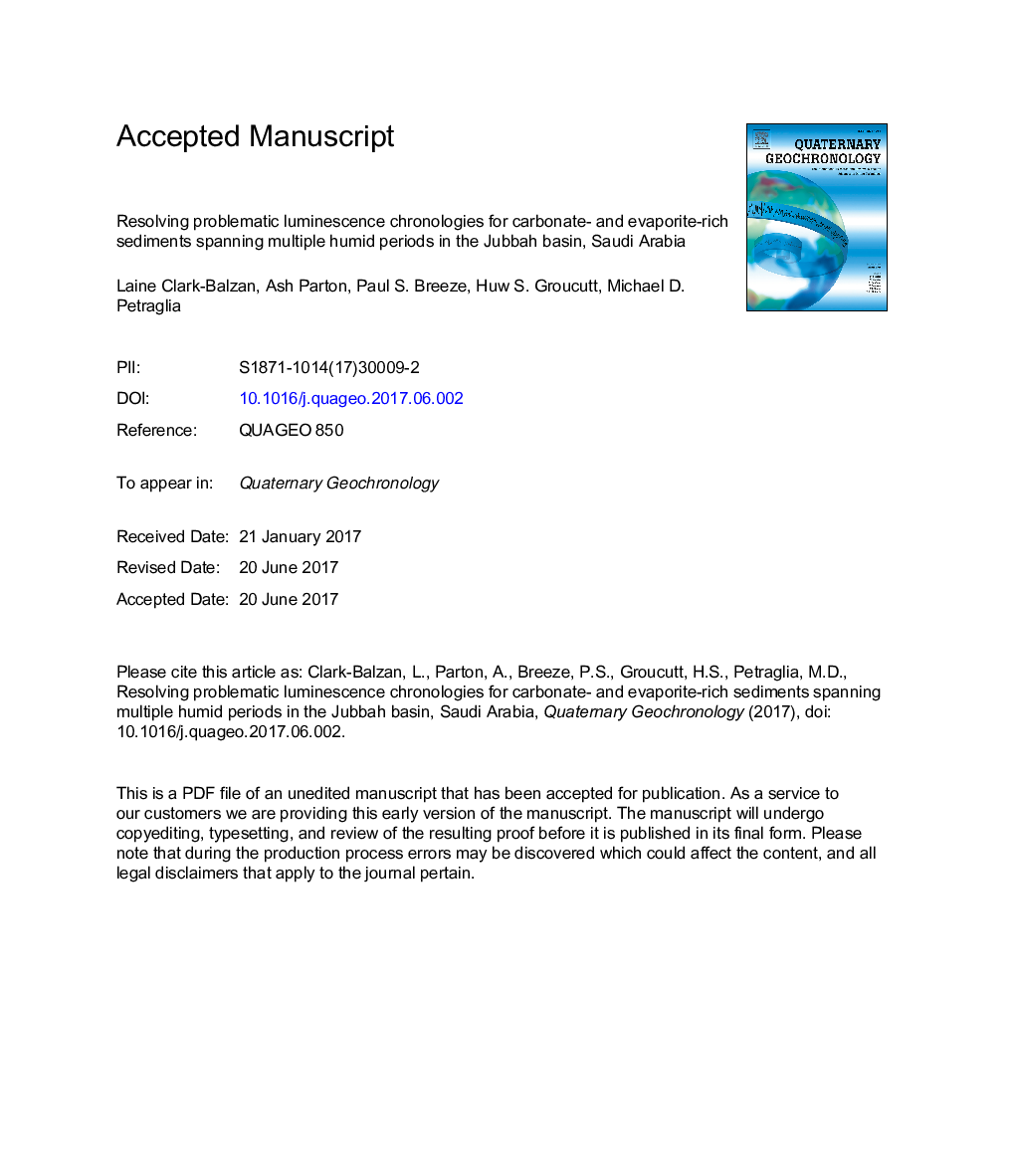| کد مقاله | کد نشریه | سال انتشار | مقاله انگلیسی | نسخه تمام متن |
|---|---|---|---|---|
| 8912819 | 1639831 | 2018 | 75 صفحه PDF | دانلود رایگان |
عنوان انگلیسی مقاله ISI
Resolving problematic luminescence chronologies for carbonate- and evaporite-rich sediments spanning multiple humid periods in the Jubbah Basin, Saudi Arabia
ترجمه فارسی عنوان
حل معادلات لومینسانس معیوب برای رسوبات غنی از کربنات و تبخیر در دوره های رطوبتی چند ساله در حوضه جببه عربستان سعودی
دانلود مقاله + سفارش ترجمه
دانلود مقاله ISI انگلیسی
رایگان برای ایرانیان
کلمات کلیدی
موضوعات مرتبط
مهندسی و علوم پایه
علوم زمین و سیارات
ژئوشیمی و پترولوژی
چکیده انگلیسی
Most of the world's presently hyper-arid desert regions have experienced previous periods of significantly higher humidity and milder environmental conditions. The timing of these 'greening events' is critical to research upon global climatic fluctuations and for studies of hominin palaeodemography and range expansion, contraction, and extinction, but dating these climatic shifts via terrestrial sedimentary records can be difficult. Here, we outline the challenges inherent in the radiometric dating of carbonate- and evaporite-rich sediments preserved in the Jubbah basin (Nefud Desert, northern Saudi Arabia), a critical area for reconstructing the evolution of local hydrological regimes across long timescales. The Jubbah basin is surrounded by sandstone jebels (bedrock outcrops), which have prevented significant leeward dune accumulation for at least 400,000 years. The sedimentary sequences in the basin indicate repeated fluctuations between arid and humid climatic conditions, and provide key hydroclimatic records for northern Arabia. Quartz OSL and feldspar pIRIR290 luminescence measurements and radiocarbon dating efforts are reported from four palaeoenvironmental sections in the Jubbah basin. Dates from sand-rich levels are relatively unproblematic, but significant difficulties were encountered when calculating luminescence ages from carbonate and evaporite-rich sediments. Examination of the age-depth profiles, elemental composition, and sedimentological characteristics of these sections indicates that both secular disequilibrium and post-depositional alteration of the sediments has resulted in inaccurate dose rate assessment for multiple samples. In particular, we suggest that multiple groundwater pulses in the Jubbah basin have caused carbonate re-precipitation and concurrent uranium enrichment in subsurface deposits, whereas 'perched' sections (such as the carbonate-topped remnants reported elsewhere across the Nefud) seem to be free from such alteration. These difficulties highlight important considerations for the production of chronologies from comparable settings elsewhere. Careful evaluation of all results, however, yields a robust chronology indicating the presence of varying levels of groundwater from the Holocene, MIS 3, 5, and probably older sediments from MIS 7 through to 9 or 11. We therefore provide a detailed discussion of the production of a reliable chronological framework for the Jubbah basin as an exemplar of the challenges to be overcome in such settings, and the amount of information that can be derived in so doing.
ناشر
Database: Elsevier - ScienceDirect (ساینس دایرکت)
Journal: Quaternary Geochronology - Volume 45, April 2018, Pages 50-73
Journal: Quaternary Geochronology - Volume 45, April 2018, Pages 50-73
نویسندگان
Laine Clark-Balzan, Ash Parton, Paul S. Breeze, Huw S. Groucutt, Michael D. Petraglia,
